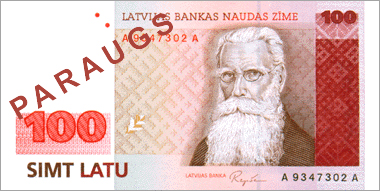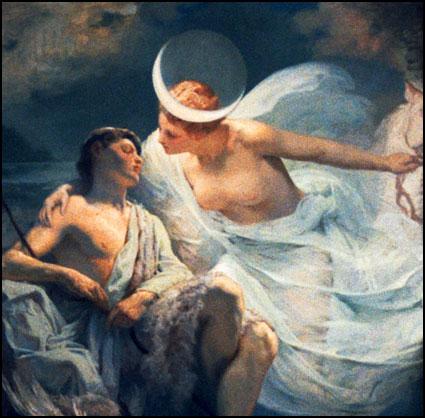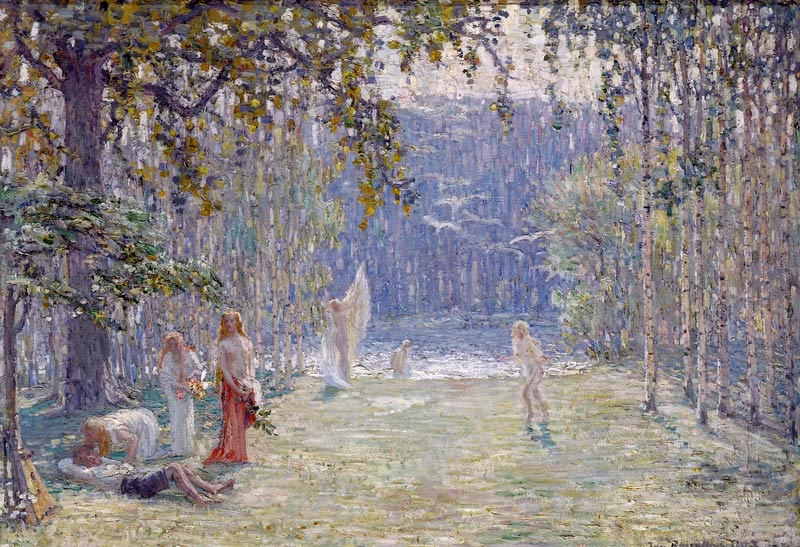|
Daina (Latvia)
A daina or tautas dziesma is a traditional form of music or poetry from Latvia. Lithuanian ''dainos'' share common traits with them, but have been more influenced by European folk song traditions. Latvian dainas often feature drone vocal styles and pre-Christian themes and legends, and can be accompanied by musical instruments such as Baltic psalteries (e.g. kokles). Dainas tend to be very short (usually four-liners) and are usually in a trochaic or a dactylic metre. Dainas are being translated into English by Latvian American Ieva Auziņa-Szentivanyi. Poetic metre and its limitations The trochaic metre is the most popular, with around 95% of dainas being in it. Characteristic of this metre is that an unstressed syllable follows a stressed syllable, with two syllables forming one foot. Two feet form a dipody and after every dipody, there is a caesura, which cannot be in the middle of a word. The dainas traditionally are written down so that every line contains two dipodies. I ... [...More Info...] [...Related Items...] OR: [Wikipedia] [Google] [Baidu] |
Epithet
An epithet (, ), also a byname, is a descriptive term (word or phrase) commonly accompanying or occurring in place of the name of a real or fictitious person, place, or thing. It is usually literally descriptive, as in Alfred the Great, Suleiman the Magnificent, Richard the Lionheart, and Ladislaus the Short, or allusive, as in Edward the Confessor, William the Conqueror, Æthelred the Unready, John Lackland, Mehmed the Conqueror and Bloody Mary. The word ''epithet'' also may refer to an abusive, defamatory, or derogatory word or phrase. This use is criticized by Martin Manser and other proponents of linguistic prescription. H. W. Fowler noted in 1926 that "''epithet'' is suffering a vulgarization that is giving it an abusive imputation." Linguistics Epithets are sometimes attached to a person's name or appear in place of their name, as what might be described as a glorified nickname or sobriquet, and for this reason some linguists have argued that they should be c ... [...More Info...] [...Related Items...] OR: [Wikipedia] [Google] [Baidu] |
Latvian Mythology
Latvian mythology is the collection of myths that have emerged throughout the history of Latvia, sometimes being elaborated upon by successive generations, and at other times being rejected and replaced by other explanatory narratives. These myths, for the most part, likely stem from Proto indo european, Proto-Indo-European practices and the later folk traditions of the Latvian people and pre-Christian Baltic mythology. Latvian mythology is used particularly as a tool for reconstructing and analysing the historical pagan beliefs and national identity of Latvia. The minute details of most, if not all of these myths vary per region, and sometimes even per family. History 13th–18th century There are few reports of Baltic tribes, the ancestors of modern Latvians, and their mythology until Northern Crusades, Christianization in the 13th century. Since Christianization, there have been several reports related to local mythology including chronicles, travel reports, visitation rec ... [...More Info...] [...Related Items...] OR: [Wikipedia] [Google] [Baidu] |
The Cabinet Of Folksongs
Cabinet of Folksongs or Cabinet of Dainas () is a cabinet tall, wide, and deep, in which all Latvian folksongs (''dainas'') collected by Latvian folklorist Krišjānis Barons are stored. The cabinet itself was made in Moscow in 1880 after Barons' draft. In 2001, the Cabinet of Folksongs was included in the UNESCO Memory of the World Register. The cabinet contains documents that preserve traditions and other details about pre-Christian Latvian tribes. History Barons started acquiring folksongs in 1868 (or 1878) with the purpose of demonstrating "that Latvian culture in its oldest part is of equal value as the culture of other nations". The cabinet was built in Moscow in 1880 and was based on Barons' draft. Due to the number of folksongs that were sent to Barons, the cabinet was deemed necessary. Prior to the completion of the cabinet, the folksongs were stored in cigarette-paper boxes. When the amount of texts approached 150,000 in 1893, Barons and his work returned to Latvia ... [...More Info...] [...Related Items...] OR: [Wikipedia] [Google] [Baidu] |
Krišjānis Barons
Krišjānis Barons (October 31, 1835 – March 8, 1923) was a Latvian writer who is known as the "father of the Daina (Latvia), dainas" (), largely thanks to his systematization of the Latvian folk song, folk songs, and his labour in preparing their texts for publication in ''Latvju dainas''. His portrait appeared on the 100-Latvian lats, lat banknote prior to the Lat being replaced by the Euro in 2014, his being the only human face of an actual person on modern Latvian currency. Barons was very prominent among the Young Latvians, and was also an important writer and editor. Latvju dainas Background and importance Barons is well known as the creator of ''Latvju dainas'', published between 1894 and 1915 in six volumes, and includes 217,996 folk songs. Barons though, was not the author of the original idea, neither did he collect the texts, nor rewrite all the received texts on the tiny paper slips of the famous Cabinet of Folksongs (''Dainu skapis''), though there is a signific ... [...More Info...] [...Related Items...] OR: [Wikipedia] [Google] [Baidu] |
Laima
Laima is a Baltic goddess of fate. She was associated with childbirth, marriage, and death; she was also the patron of pregnancy, pregnant women. Laima and her functions are similar to the Hindu goddess Lakshmi. In Latvia In Latvian mythology, Laima and her sisters, Kārta and Dēkla, were a trinity of fate deities, similar to the Norse Norns or the Greek Moirai. Laima makes the final decision on individual's fate and is considerably more popular. While all three of them had similar functions, Laima is the Goddess of luck and is more related with mothers and childbirth, Dēkla is in charge of children, and Kārta holds power over the adult's life. In modern Dievturi these three goddesses are referred to as the three Laimas, indicating they are the same deity in three different aspects. Birth rituals at the end of the 19th century included offerings of hen, sheep, towels or other woven materials to Laima. Only women could participate in the ritual, performed in a sauna (''pirtis' ... [...More Info...] [...Related Items...] OR: [Wikipedia] [Google] [Baidu] |
Mēness
Latvian mythology is the collection of myths that have emerged throughout the history of Latvia, sometimes being elaborated upon by successive generations, and at other times being rejected and replaced by other explanatory narratives. These myths, for the most part, likely stem from Proto-Indo-European practices and the later folk traditions of the Latvian people and pre-Christian Baltic mythology. Latvian mythology is used particularly as a tool for reconstructing and analysing the historical pagan beliefs and national identity of Latvia. The minute details of most, if not all of these myths vary per region, and sometimes even per family. History 13th–18th century There are few reports of Baltic tribes, the ancestors of modern Latvians, and their mythology until Christianization in the 13th century. Since Christianization, there have been several reports related to local mythology including chronicles, travel reports, visitation records, Jesuit reports and other accounts ... [...More Info...] [...Related Items...] OR: [Wikipedia] [Google] [Baidu] |
Lunar Deity
A lunar deity or moon deity is a deity who represents the Moon, or an aspect of it. These deities can have a variety of functions and traditions depending upon the culture, but they are often related. Lunar deities and Moon worship can be found throughout most of recorded history in various forms. Moon in religion and mythology Many cultures have implicitly linked the 29.5-day lunar cycle to women's menstrual cycles, as evident in the shared linguistic roots of "menstruation" and "moon" words in multiple Language family, language families. This identification was not universal, as demonstrated by the fact that not all moon deities are female. Still, many well-known mythologies feature moon goddesses, including the Greek goddess Selene, the Roman goddess Luna (mythology), Luna, the Chinese goddess Chang'e, and the Mayan goddess Coyolxauhqu, who's decapitation may represent a lunar eclipse. Several goddesses including Artemis, Hecate, and Isis did not originally have lunar aspec ... [...More Info...] [...Related Items...] OR: [Wikipedia] [Google] [Baidu] |
Saulė
Saulė (, ) is a solar goddess, the common Baltic solar deity in the Lithuanian and Latvian mythologies. The noun ''Saulė''/''Saule'' in the Lithuanian and Latvian languages is also the conventional name for the Sun and originates from the Proto-Baltic name *''Sauliā'' > *''Saulē''. Representation Saulė is one of the most powerful deities, the goddess of the sun itself, responsible for all life on Earth. She is the patroness of the unfortunate, especially orphans. The Lithuanian and Latvian words for "the world" (''pasaulis'' and ''pasaule'') are translated as " placeunder the Sun". Saulė is mentioned in one of the earliest written sources on Lithuanian mythology. According to the Slavic translation of the Chronicle by John Malalas (1261), a smith named Teliavelis made the Sun and threw it into the sky. Missionary Jerome of Prague (ca. 1369–1440) spent three years attempting to Christianize Lithuania and later recounted a myth about the kidnapped Saulė. She was h ... [...More Info...] [...Related Items...] OR: [Wikipedia] [Google] [Baidu] |
Hero
A hero (feminine: heroine) is a real person or fictional character who, in the face of danger, combats adversity through feats of ingenuity, courage, or Physical strength, strength. The original hero type of classical epics did such things for the sake of glory (honor), glory and honor. post-classical history, Post-classical and modern history, modern heroes, on the other hand, perform great deeds or selfless acts for the common good instead of the classical goal of wealth, pride, and fame. The antonym of ''hero'' is ''villain''. Other terms associated with the concept of ''hero'' may include ''good guy'' or ''wikt:white hat, white hat''. In Classics, classical literature, the hero is the main or revered character in Epic poetry, heroic epic poetry celebrated through ancient legends of a people, often striving for military conquest and living by a continually flawed personal honor code. The definition of a hero has changed throughout time. Webster's Dictionary, Merriam We ... [...More Info...] [...Related Items...] OR: [Wikipedia] [Google] [Baidu] |




